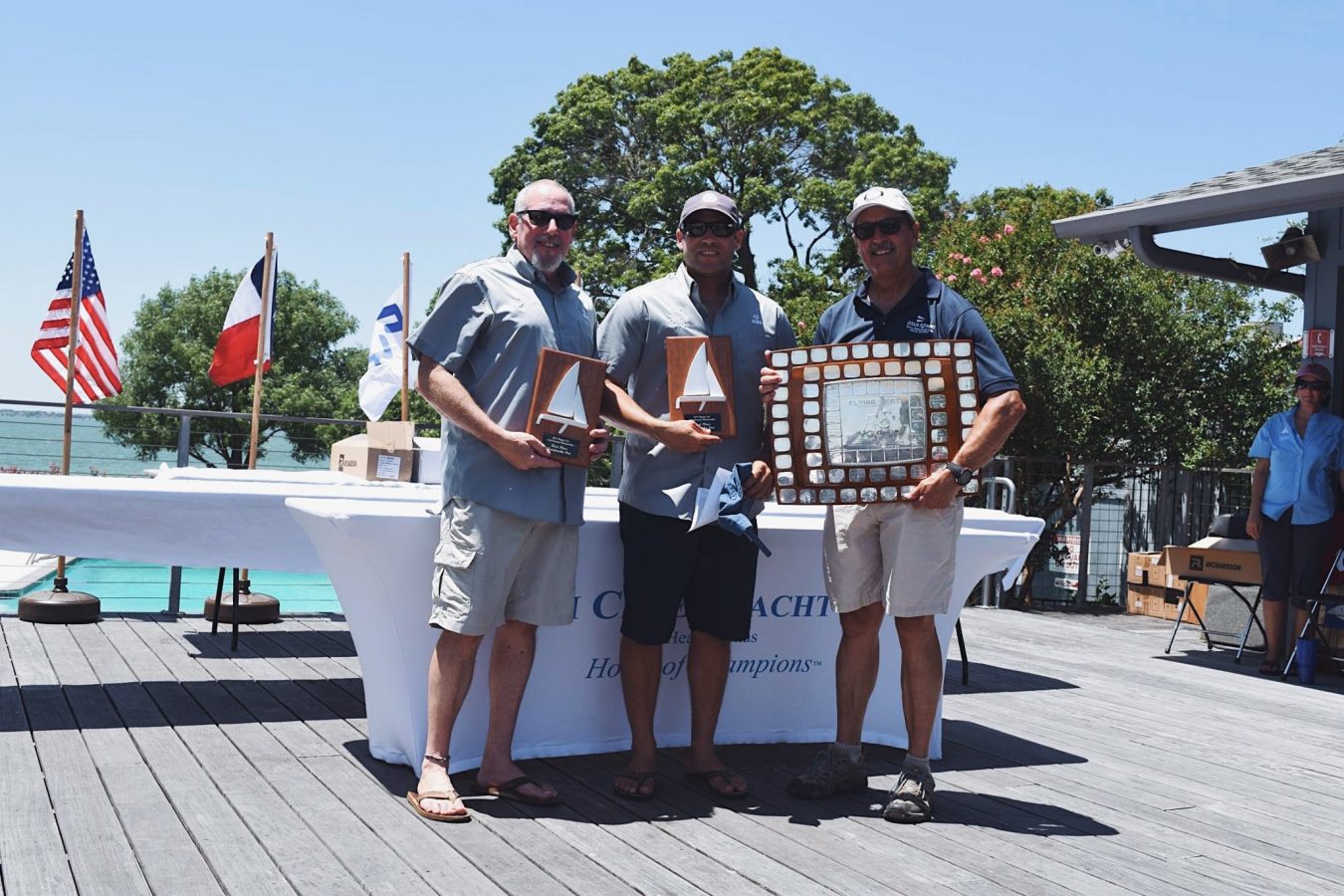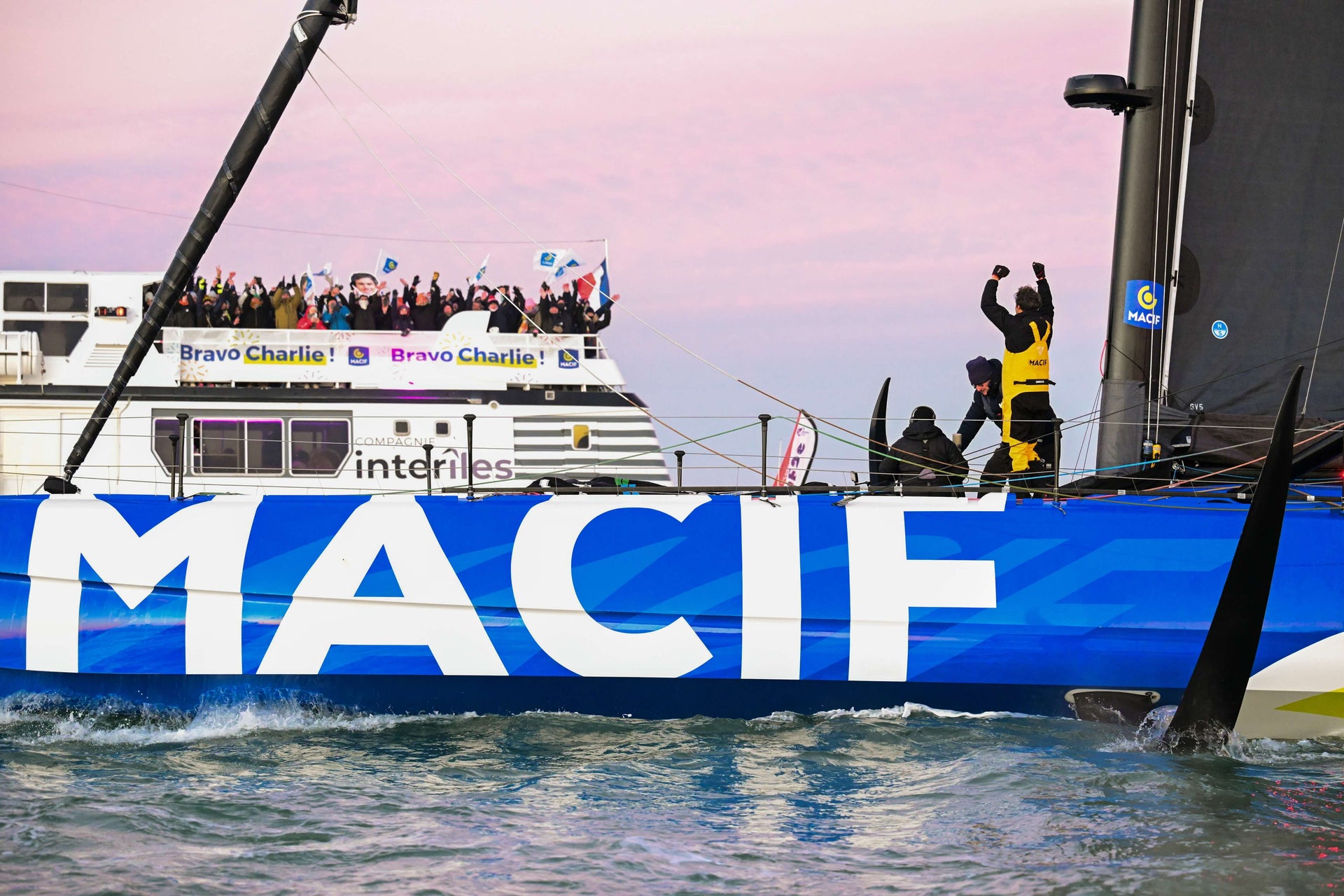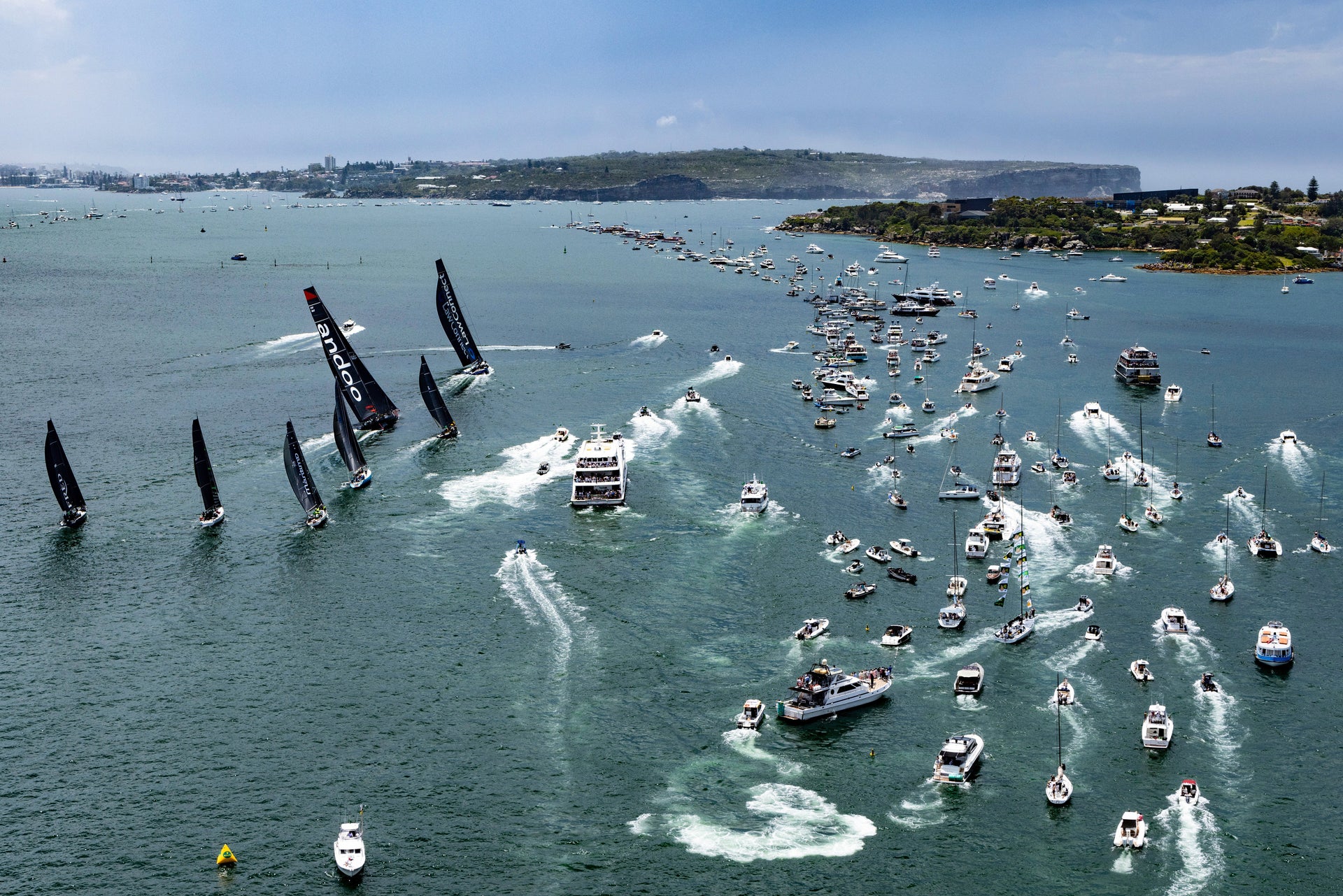LESSONS LEARNED AT FLYING SCOT NORTH AMERICANS
LESSONS LEARNED AT THE FLYING SCOT NORTH AMERICANS
Expert Zeke Horowitz Shares His Tricks Of The Trade

The 2018 Flying Scot North American Championship at Rush Creek Yacht Club in Heath, TX could have been called the “How to Run a Major Championship Clinic.” From the outset of the event, it was obvious that RCYC along with Fleets 209 and 23 had pulled out all the stops to make this regatta stand out as an all-time great in this class’ rich history. We had a super energetic and hard working Regatta Chair in Mike Brown, who was extremely active in helping make sure everyone had what they needed, and felt organized and welcomed. He had ensured that this sentiment was expressed at every turn from registration to measurement to launching and hauling out. There were plenty of cold waters (and other beverages…) and smiles at every turn. But perhaps the biggest shout out needs to go to local legend Bob Gough who recruited an absolutely World class PRO in Mark Foster (a sailing legend in his own right) who, in turn, assembled a brilliant team of volunteers who kept the racing as square and fair as possible in conditions that regularly delivered 30+ degree wind shifts. The RC communication on the radio was perfect and seemingly miraculously, they were always ahead of the big shifts and velocity changes. Kudos to the tremendous team that put together an absolutely flawless event.
I don’t think anyone on the racecourse managed to make the sailing look as easy as the RC made the race management look. We were sailing on the Southwest corner of the Lake so it wasn’t always easy to see the breeze before it touched down right off the coast. It was very common for a beat to feature three or four 30-degree wind shifts with the pressure ranging anywhere from eight knots all the way up to the high teens. You could quickly watch a boat go from being in your mainsail window 1,000 yards to leeward of you to all of the sudden being directly on your bow 1,000 yards in front of you! Needless to say, keeping your wits about you was important but not easy. These condition is easy to get frustrated in and nearly impossible to always be in the right place at the right time. But I choose to think of this condition as one of the easiest conditions to make decisions in. Some readers who experienced this first hand might be shutting their computers and decidedly never listening to me again… but first let me explain!
When sailing in these conditions on a windward leg that is around a mile long, you are very rarely going to be in the same breeze as your competitors (especially those on the other side of the course). You can’t control what the breeze is doing, and you can’t control the decisions your competitors are making. So, all you can worry about is getting your boat to the weather mark as best you can in the breeze available to you. It’s as simple as: “Am I lifted or headed and am I in the most pressure imminently available to me?” THAT’S IT.
We learned time and time again that the breeze was oscillating and it always seemed to come back eventually. Even when it seemed really bleak, the new pressure would drop in, the direction would shift back, and you could tack and be right back in front with leverage. This was not a condition where you could chase shifts or puffs.
When we saw the boats on the opposite side of the course go way up in a big lift with breeze that we didn’t have we would try to take a deep breath and come back to, “am I lifted or headed? And am I in the most breeze imminently available to me?” That was the only question we would make decisions on. Never, “we need to go get what they have.” We couldn’t get what they had… It wasn’t available to us. So if we were still in a relative lift and were still heading towards the most breeze imminently available to us, we would hang in there and wait until our moment to go up in a big lift with pressure that the other guys didn’t have. If you tack to try to go get something that other people on the other side of the course have, by the time you get there, it’s going to be gone and the boats you just left on your side are now going to have their shot. That’s called being “out of phase.” There were countless occurrences of this at the NAC’s but 9.9 times out of 10, the team that stayed patient and disciplined and kept sailing on their lift, would win out in the end. So to me, this is simple racing because all you can worry about is yourself and sailing on the best number in the best breeze available to you. Note that in this condition you oftentimes have to value sailing on the right tack over clear air. Staying on the lift in dirty air was usually better than sailing a big header to clear your air. This is tough decision to make but it’s a very important one for staying in phase! When in doubt point your boat at the mark.
Having top notch boat speed makes being patient a whole lot easier.
The majority of the regatta was sailed in flat water and more than ten knots. This is pretty powered up conditions for the Flying Scot and there were a couple of sail trim items we focused on to make sure our speed was there. Since we were rarely looking for power and the water was so flat, relative to how much breeze there was, we focused on trying to achieve a nice flat sail set up. If we had the same amount of breeze but more waves/chop, we wouldn’t have been so aggressive on the flat sails. We had the jib halyard tension set so the luff of the jib was mostly smooth. We still stuck to having it a touch too loose, but it was a click tighter than it would have been if there was a bit of chop. If there were any wrinkles coming off the snaps, they weren’t longer than about six inches. We rarely used weather jib sheet because we didn’t need any extra power in the foot and we sheeted the leeward sheet a tad harder than usual too. We had the leech tell tale just on the verge of stalling as soon as we were up to speed. This helped us keep the jib nice and flat and achieve adequate pointing. The foot of the jib had a hint of curl when we were fully trimmed. We set the main halyard so that the luff was smooth when sailing downwind.
In the breezier conditions this meant that the luff was a bit loose for the upwind portion of the race. So we played the cunningham more often than usual so we could set the “speed wrinkles” coming off the luff. The wrinkles at the bottom of the main came off the luff and made it about half way back towards the leech. The wrinkles above that one got progressively shorter (closer to the luff) as they made their way up the sail. Above the vision window in the luff of the main, the luff was mostly smooth. So in the biggest breeze we had we were pulling the cunningham grommet down by up to about four inches to keep our speed wrinkles where we wanted them. Lastly, we made sure the outhaul was nice and snug to keep the foot of the main flat. There was a noticeable tension wrinkle in the foot when we weren’t trimmed in. I would have called our outhaul tension 90%. After that it was all about playing the vang and main sheet through the puffs and lulls to try to achieve a steady angle of heel. Having a crew counting the puffs and lulls so the skipper can be ready to make the appropriate adjustment was key.
I’d like to thank all of the dedicated Flying Scot class members and class officers for all the hard work making it down to Rush Creek Yacht Club and helping to create the type of environment that makes everyone want to keep coming back. This is a special boat and a special fleet and it would be nothing without all of the spectacular personalities that define it. We’re looking forward to seeing everyone again real soon!


























